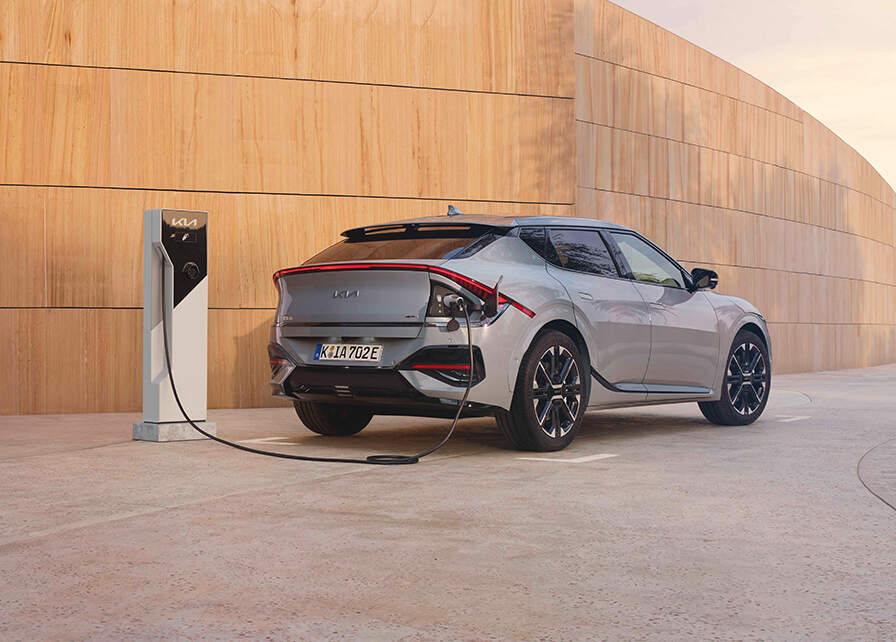ELECTRIC CAR CHARGING AND RANGE

Easy Electric Car charging with Impressive range
We're committed to a brighter future that sees lower carbon emissions. Part of that means we've made it as simple as possible to charge your Kia with easy-to-use Electric Car Chargers – whether you're at home, or out and about.
Electric Car chargers for your Kia
A simple guide to charging your Electric or Plug-in Hybrid Car.

Charging your Electric Car at home
Inspirational journeys — all powered from a wallbox charger at home. It's the simplist, most convenient and cost effective way of charging your Kia Car.

Charging your Electric Car on the road
Electric Car charging on the go has never been easier. The Kia Charge app provides access to the largest number of public charging networks in the UK and Europe. What's more, it gives you access to exceptional value and ultra-fast charging through its Ionity Power bolt-on subscription.

Battery Range
Whether you choose from one of our plug-in hybrid or Electric Cars , our vehicles allow you to travel short and long distance without worries. Find out how far your battery will take you.
Need to know more about Electric Car charging?
What is the overall cost of running an electric car? collapsed collapsed
How long does an electric car take to charge and what factors affect this? collapsed collapsed
What is an electric car's longest range? collapsed collapsed
How long do batteries last in electric cars after a single charge? collapsed collapsed
Get more from Kia
Legal Disclaimer
7 Year Warranty
Kia high voltage lithium ion battery-units in electric vehicles (EV), hybrid electric vehicles (HEV) and plug-in hybrid electric vehicles (PHEV) are built to have a long life. These batteries are covered by the Kia warranty for a period of 7 years from initial registration or 100,000 miles, whichever comes first. For low voltage batteries (48V and 12V) in mild-hybrid electric vehicles (MHEV), the Kia warranty covers a period of 2 years from initial registration regardless of mileage. For EVs and PHEVs only, Kia guarantees a 70% capacity of the battery. Capacity reduction of the battery in HEV and MHEV is not covered by the warranty. To minimize possible capacity reduction, consult the owner's manual. Kia warranty covers a period of 7 years from initial registration or 100,000 miles, whichever comes first. Deviations according to the valid guarantee conditions, e.g. for battery, paint and equipment, subject to local terms and conditions. For full Kia warranty terms and exclusions click here
Actual charging speed & charging time may be influenced by the battery temperature and exterior weather conditions.
Battery range figures are official EU test figures for comparative purposes and may not reflect real driving results. Fuel consumption and CO2 emissions are tested using WLTP. Only compare fuel consumption, CO2 and electric range figures with other cars tested to the same technical procedures. For more information about WLTP please visit https://www.kia.com/uk/new-cars/emissions




